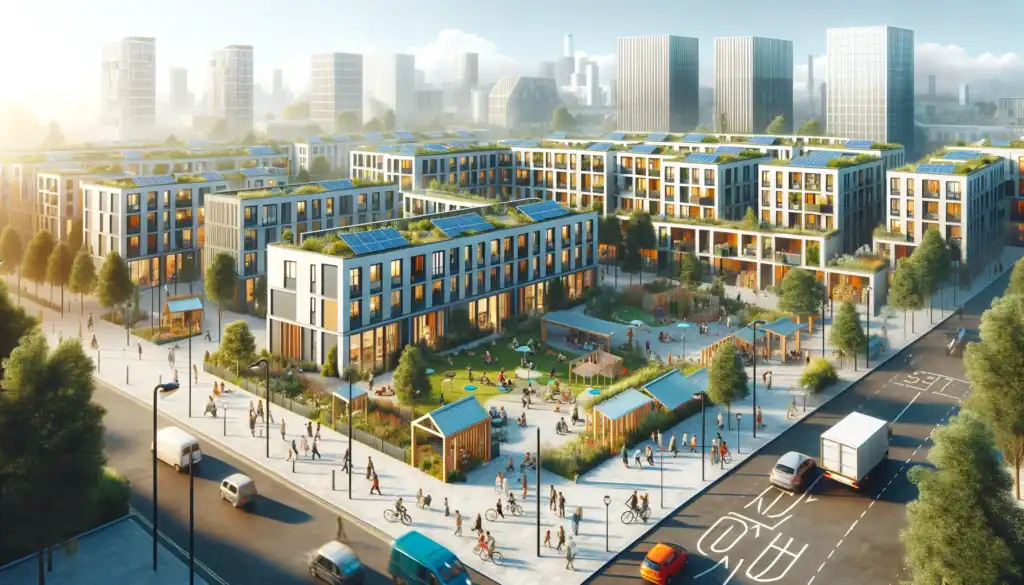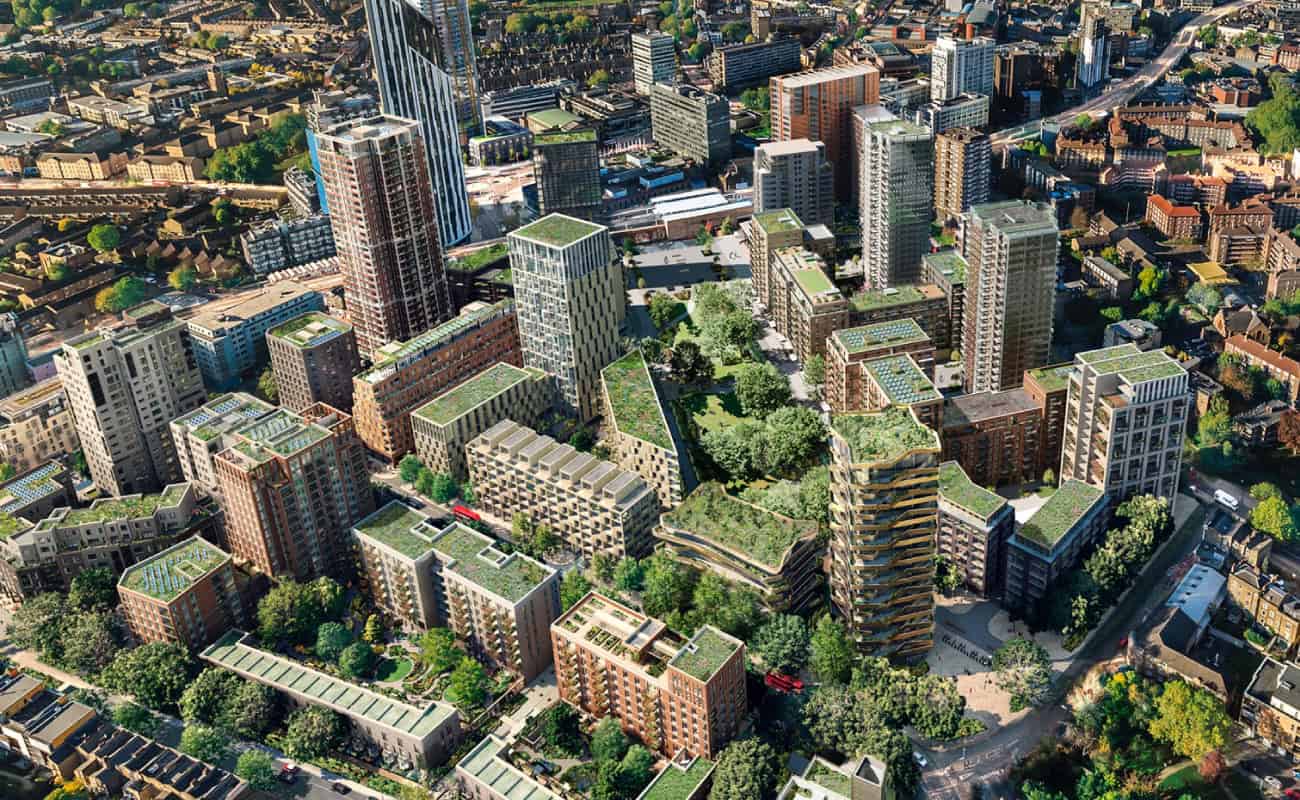Urban renewal, a dynamic force in modern city development, has revolutionized the real estate landscape in cities worldwide. It bridges the gap between a city’s historic roots and the promise of modernity, influencing everything from property values to neighborhood demographics. At the heart of today’s real estate transactions sits the Multiple Listing Service (MLS), a powerful platform that doesn’t merely list properties but also acts as a critical lens through which urban renewal’s impact is measured and understood. For real estate professionals, buyers, developers, and city planners, understanding the intersection between urban renewal and MLS is essential for strategic decision-making.
Defining Urban Renewal in a Modern Context
Urban renewal historically emerged as a governmental response to urban decay, aiming to revitalize declining neighborhoods, upgrade public infrastructure, and stimulate local economies. In the twenty-first century, the concept extends further, encompassing sustainable development, mixed-use communities, historical preservation, and public-private partnerships. Modern projects focus on making urban spaces more livable, economically vibrant, and environmentally responsible. Such transformative efforts bring ripple effects throughout the property market, yielding opportunities and challenges for all stakeholders.
Revitalizing neglected districts often increases property values, attracts new investment, and alters demographic profiles. New commercial and residential projects tend to spur additional regeneration, creating a positive feedback loop. However, these same processes can introduce concerns around affordability, displacement, and maintaining neighborhood character. Realtors and investors must therefore be attuned not only to structural changes but also to their broader social and economic consequences.
Neighborhood Transformation Tracked Through MLS Data
When a city undertakes a significant renewal effort, the MLS provides objective data on the evolution of that neighborhood’s housing market. Initial stages may show a gradual increase in listings, typically as investors acquire and rehabilitate older properties. As construction wraps up and infrastructure improvements take shape, MLS data often reflects a marked uptick in home values and a reduction in average days on the market.
A good example might be the transformation of a former industrial area into a fashionable arts district. MLS would chronicle not only the introduction of trendy condos and lofts but also how these transformed offerings compare with prior inventory. Such records may also highlight heightened demand for walkable urban environments, creating a feedback loop that encourages further investment in amenities and mixed-use development.

Urban Renewal’s Broader Impact on Housing Inventory
Urban renewal projects frequently expand the range and diversity of housing inventory. MLS records often reveal the shift from predominantly single-family homes or outdated multi-unit properties to a more varied mix of offerings: townhouses, apartments, live-work spaces, and sustainably designed buildings. This diversity can attract a wider audience of buyers and renters, from young professionals and artists to downsizing retirees.
Furthermore, MLS data may expose areas where housing turnover increases due to rising property values, which typically attract investors and new homeowners seeking opportunity in up-and-coming districts. Savvy real estate professionals monitor these trends closely, advising clients on optimal timing for selling or purchasing, as well as on the future potential of specific neighborhoods.
The Influence of Urban Renewal on Property Valuations
Urban renewal’s effect on property valuations is among its most closely watched outcomes. As infrastructure improves and vacant lots give way to vibrant developments, appraised values and list prices invariably rise. The MLS effectively documents these changes in real time, capturing the sequential price increases characteristic of newly revitalized areas.
Appraisers and lenders rely on MLS comparables to assess how urban renewal influences home equity and mortgage underwriting. In many cases, the first wave of successful redevelopment creates comps that justify further investment and higher appraisals, reinforcing an upward trend in market confidence. This mutually reinforcing cycle benefits sellers and developers but can also signal increased tax assessments and shifts in affordability for area residents.
The Role of MLS in Marketing and Selling Redeveloped Properties
Urban renewal creates a distinct narrative around properties in revitalized areas. MLS listings for such homes often spotlight proximity to new retail, parks, improved transit, or cultural attractions resulting from renewal projects. This storytelling element is pivotal in marketing strategies, as buyers frequently seek homes that offer both functional appeal and a sense of connection to a community’s resurgence.
A revitalized MLS listing might emphasize eco-friendly construction, state-of-the-art technology, or unique architectural features that distinguish newer builds from legacy inventory. These selling points, documented in the MLS, shape buyer perceptions and ultimately influence neighborhood desirability and reputation.

Data-Driven Decision-Making for Developers and Investors
For developers and investors, the MLS serves as a robust foundation for informed decision-making. Access to comprehensive historical and current data allows these stakeholders to assess which renewal initiatives generate the greatest value and which property types command top dollar. Trends identified through MLS analytics can inform the scope and design of future projects, ensuring they resonate with market demand.
For example, if the MLS shows a strong absorption rate for smaller, energy-efficient condos in a renewed district, developers may adjust their designs to capture similar demand. In doing so, the MLS not only chronicles the success of existing projects but also guides the evolution of new ventures.
Conclusion
Urban renewal projects are reshaping cities, creating opportunity, and revitalizing communities. The MLS, once viewed as merely a catalog of homes, now stands as an indispensable resource for understanding and navigating these transformations. Through comprehensive data capture, trend analysis, and insightful reporting, the MLS empowers agents, developers, investors, and city officials to balance progress with preservation and growth with inclusion.
Successfully merging urban renewal with the robust data found in the MLS helps establish a roadmap for more equitable and sustainable real estate development. As cities and neighborhoods continue to evolve, those who learn to interpret and harness this intersection will be best poised to thrive in a dynamic urban future.
Frequently Asked Questions about Urban Renewal Projects and MLS
-
How does urban renewal impact neighborhood property values on the MLS?
Urban renewal often leads to higher property values, as revitalized neighborhoods attract demand and investment, which is reflected in MLS data. -
What role does the MLS play in urban renewal projects?
The MLS tracks shifts in inventory, pricing, and absorption rates, giving real estate professionals insight into the effects of urban renewal over time. -
Can MLS data help developers plan future urban renewal projects?
Yes, developers use MLS trends to gauge demand, identify desirable property types, and guide project design for maximum community impact. -
How does MLS highlight changes in housing inventory after urban renewal?
MLS records reveal shifts from outdated housing to modern, diverse options like condos, townhouses, and live-work spaces as areas are renewed. -
Does urban renewal always lead to increased affordability?
Not always. While urban renewal can diversify housing stock, MLS data may also show rising prices and reduced low-cost inventory, raising affordability concerns. -
How do agents use MLS information when marketing properties in renewed areas?
Agents use MLS listings to emphasize new amenities, improved infrastructure, and unique features to attract buyers interested in revitalized communities.










